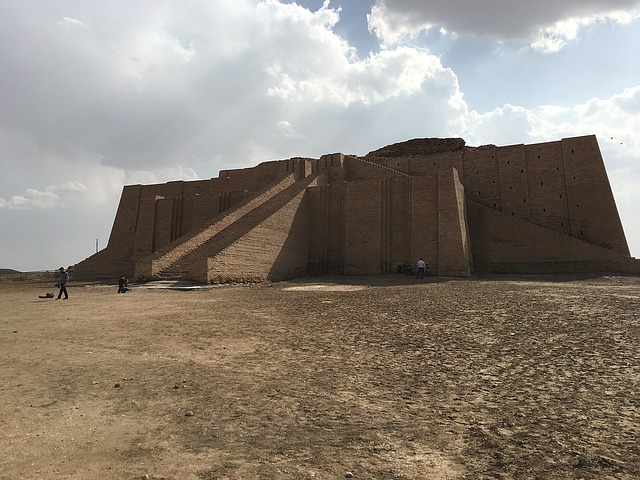By Tim Lambert
Sumerian Society
Sumer was the world’s first civilization. It arose about 3,500 BC in what is now Iraq in the land between the Tigris and the Euphrates. A number of city-states grew up, each one ruling an area of the surrounding countryside. About 3,300 BC the Sumerians invented writing on clay tablets.
Each Sumerian city had a protector god and the king was regarded as his representative on earth. Below the kings were nobles and rich merchants who lived in considerable comfort in large houses with many rooms. Their houses were two-story high and they were arranged around a courtyard. However poor people lived in simple huts.
In Sumer, men were also priests and scribes. Below them were craftsmen and in the countryside, peasant farmers. At the bottom were the slaves who did the hardest and dirtiest work. No doubt their lives were horrid.
Meanwhile, Sumerian women were kept busy weaving cloth and weaving baskets at home.
Sumerian Religion
Like other ancient peoples, the Sumerians were polytheists (they worshiped many gods). Among them were Ultut the sun god, Nanna the moon god, Enki the god of water, Enlil god of the air, and Ianna goddess of love.
In Sumer each city had a ‘patron’ god and his temple was erected on a step pyramid called a ziggurat. The temples were very wealthy. They employed many craftsmen and they also controlled large estates.

When rich Sumerians died they were buried with goods to use in the next life. These included weapons, jewelry, gold vessels, and musical instruments.
Sumerian farmers grew wheat and barley as well as peas. They also grew vegetables like onions and leeks. They raised cattle, pigs, goats, and sheep. They also fished in the rivers. Donkeys were used as beasts of burden and carts were pulled by oxen.
However, rainfall was unreliable in Sumer so the Sumerians dug irrigation canals to bring water to their crops.
Sumerian women could own property such as land and slaves. They could also own businesses. Women could be witnesses in court the same as men. Some Sumerian women could read and write. Some women were doctors, others were scribes or priestesses.
The Sumerians fought with chariots pulled by donkeys. They also used bows and arrows. They also fought with spears, axes, and clubs. Although they did not wear armor soldiers did wear leather jackets studded with bronze, which gave them some protection and they wore copper helmets and carried rectangular shields.
After about 2,350 individual city-states rose to dominate the region. The age of empires began. Sargon the ruler of Akkad (2340-2284 BC) created the world’s first empire. However, his empire was short-lived. It broke down after the death of his grandson Naramsin (2259-2223 BC). The city-state of Ur then created another short-lived empire.
Finally, Hammurabi king of Babylon (1792-1750 BC) conquered the rest of Mesopotamia and created yet another empire.